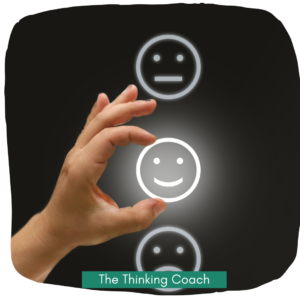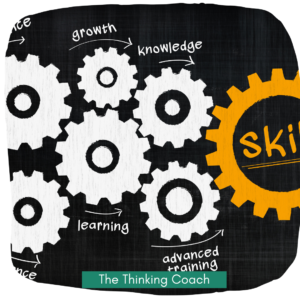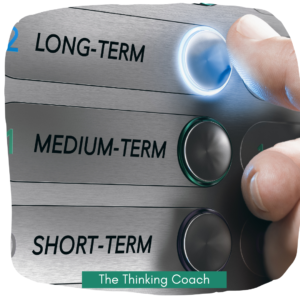Table of Contents
When it comes to retaining employees, especially top talent but not only, it requires a fundamental shift in thinking. To truly gain a competitive edge that benefits both the company and its workforce, businesses must re-evaluate their strategies for improving employee retention. In today’s rapidly evolving corporate world, a simple question emerges: how can organizations not only reduce employee turnover but also create an environment where people want to stay and thrive?
The One Central Questions in Employee Retention
The primary focus of most human resource consultants revolves around two critical questions:
- What is it that we are not doing that if we did would keep employees?
This question forms the cornerstone of employee retention strategies and signals a need for a paradigm shift in how businesses think about retaining their workforce. With continuous organizational changes occurring in companies worldwide, employee retention has become more challenging than ever before. The key to overcoming this challenge lies in rethinking traditional approaches and investing in new strategies that address the changing nature of the modern workplace.
The Cost of Ignoring Employee Retention 
High employee turnover costs companies millions of dollars every year. Ironically, much of this cost could be avoided by investing a fraction of that money into employee training and development programs that enhance employee retention. Spending a few thousand dollars on training initiatives can prevent the unnecessary loss of valuable employees and the high costs associated with recruiting, hiring, and onboarding new staff. A robust employee retention strategy that includes professional development not only increases workplace efficiency but also boosts employee morale and loyalty.
Employee Retention Requires Continuous Effort
One of the most important aspects of employee retention is recognizing that employees’ needs are ever-evolving. Engaging employees through continuous training and development programs is crucial in ensuring that they remain motivated and feel valued. As organizations face new challenges, employee engagement strategies must be updated to reflect the current workplace environment. The days of one-size-fits-all training programs are long gone. Instead, organizations must offer personalized solutions that address the unique needs of their employees.
What Employees Really Need for Retention
To build an effective employee retention strategy, businesses must look beyond surface-level benefits and focus on what employees genuinely need. It’s not just about providing what employees *want* in the short term, but rather, ensuring that they have the security and support they need to feel satisfied and engaged in the long term. Employees want to feel that they belong, are appreciated, and are part of a cohesive and collaborative team. Offering opportunities for growth and development is essential in helping employees feel that they are progressing in their careers, which is a critical factor in employee retention.
Creating a Positive Work Environment to Boost Employee Retention – You Are Dealing With Humans Not Commodities!
A positive work environment plays a crucial role in retaining employees. While monetary compensation is important, it’s not the main factor that drives employee loyalty. More often than not, employees stay with companies where they feel valued, appreciated, and respected. By fostering an atmosphere that promotes positive mental attitudes and collaboration, businesses can significantly improve employee retention.
This can be achieved with small adjustments, such as recognizing employee contributions, encouraging open communication, and providing a sense of purpose and belonging within the organization. However, although small changes it nevertheless requires attitude change by the leadership.
Retaining Top Talent Requires Strategic Thinking
When it comes to retaining top talent, a paradigm shift in thinking is required. Top talent, while highly skilled, responds to the same human considerations as any other employee. They want to feel valued, be part of a team, and know that their work is contributing to the bigger picture. Providing opportunities for professional growth through strategic thinking, emotional intelligence, and leadership training is crucial in retaining top employees. These investments not only boost employee retention but also drive higher levels of performance across the entire organization.
Investing in Soft Skills Training for Employee Retention
One of the key reasons companies struggle with employee retention is their failure to invest in soft skills training. While technical skills are necessary for job performance, soft skills such as communication, teamwork, and emotional intelligence are equally important in creating a harmonious work environment. Many organizations mistakenly assume that employees will leave regardless of training efforts, but this mindset is flawed. Investing in employee development demonstrates that the company values its employees and is willing to support their personal and professional growth, which is essential for long-term retention.
The True Cost of High Employee Turnover
The costs associated with high employee turnover far exceed the expenses of investing in employee development programs. Studies show that most employees leave their jobs due to a lack of soft skills development rather than technical deficiencies. Despite this, many companies continue to prioritize hard skills training over soft skills, investing 90% of their training budget in technical seminars and only 10% in employee engagement programs. By shifting their focus toward developing the whole employee, businesses can reduce turnover and create a more satisfied and productive workforce.
Conclusion: Prioritize Employee Retention for Long-Term Success
In conclusion, reducing employee turnover and retaining top talent is not just about offering competitive salaries or benefits. It requires a comprehensive approach that includes investing in employee development, creating a positive work environment, and addressing the evolving needs of employees. By implementing a well-rounded employee retention strategy, organizations can build a loyal, engaged, and productive workforce that drives long-term success.
Are you ready to reduce turnover and boost employee retention? Let us help you develop a tailored employee training program that addresses your organization’s unique needs. Contact us today to learn how we can enhance your employee retention efforts and create a thriving workplace culture!
Eli Harari
The Life Coach for Professionals™



I agree with you that creation is a positive work environment is the hinge point of employee stability. I work in the human resources department and see how is important employee training development. Unfortunately, as in most businesses in my country, the problem is the lack of consistent investment. Thanks for sharing.
Maja, thank you for your comment.
Teamwork is the real hidden success factor of any company. Unfortunately, Very few organizations have true Teamwork going, which affects their productivity tremendously. I have mastered teamwork and would love to conduct training for your company. It will pay great dividends!
Thanks again,
Eli
Pingback: How To Think Strategically About Your Employees Benefits
Pingback: Paradigm Shift in Thinking - Soft Skills For Corporate Success
Pingback: Making The Decision-Making Process Of Starting Your Business Effective
Pingback: Why Emotional Intelligence Is Vital In Management
Pingback: 5 Strategic Thinking Steps To Restructure A Business
Pingback: The Strategic Edge of Corporate Soft Skills in Modern Business